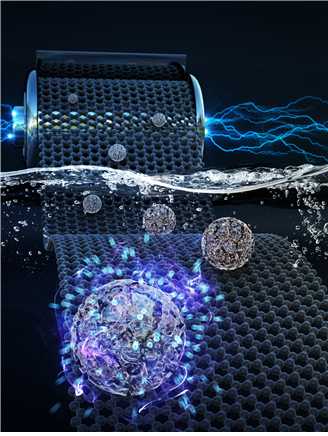
Professor Jeung Ku Kang of the Department of Materials Science and Engineering and Graduate School of EEWS at KAIST and Professor Hyung Mo Jeong from Gangwon National University have developed a water-based hybrid energy storage device with high performance and precision using porous metal oxide nanoparticles and graphene.
The device rapidly charges small portable electronics within tens of seconds with an output density 100 times faster than that of current batteries. The research was published in the August 13 issue of Advanced Functional Materials.
Although lithium-ion batteries have a wide range of use thanks to their high energy density, highly flammable organic electrolytes have caused safety issues such as smartphone explosions in the past. Lithium-ion batteries also suffer from a slow charge rate for safety due to slower electrochemical reaction rate.
Hydroponic-based batteries are seen as a safe and environmentally friendly alternative, but they have been suffering from the limited voltage range and low energy capacity for widespread usage. The research team combined metal oxides with graphene and uses hydrometer-based electrolytes for higher energy density, higher power, and improved performance.
The porous metal oxide nanoparticles developed in the study consist of two to three nanometers of nanoscale particles and are formed in large quantities with mezzo pores that are less than five nanometers. The small particle size and wide surface area allow the ions to be rapidly transferred to the surface of the material and stored inside metallic oxide particles in large quantities in a short period of time.
By applying the porous metal oxide structure to both the anode and the cathode with iron and manganese respectively, the research team implemented hydrometer-based hybrid batteries that can operate over a range of 2V.
Professor Kang said, “The high capacity and power of porous metal oxide electrodes will contribute to the commercialization of the next generation of storage devices.”
The research was conducted with the support of the Hybrid Interface-based Future Material Research Group of the Global Frontier Project of the Ministry of Science, ICT and Future Planning.

